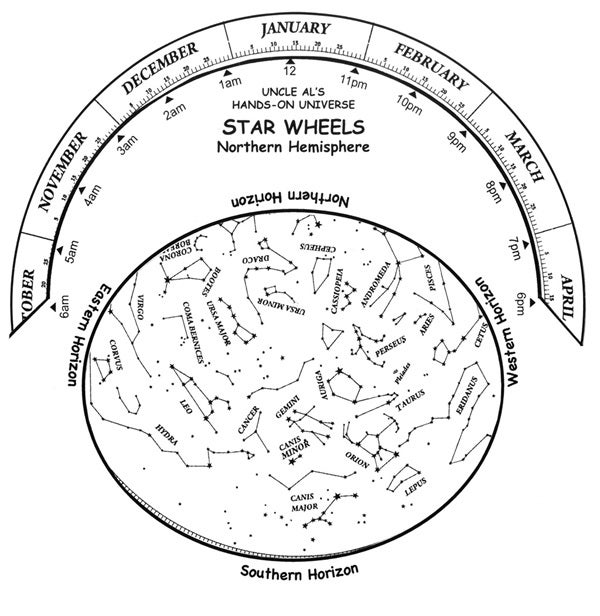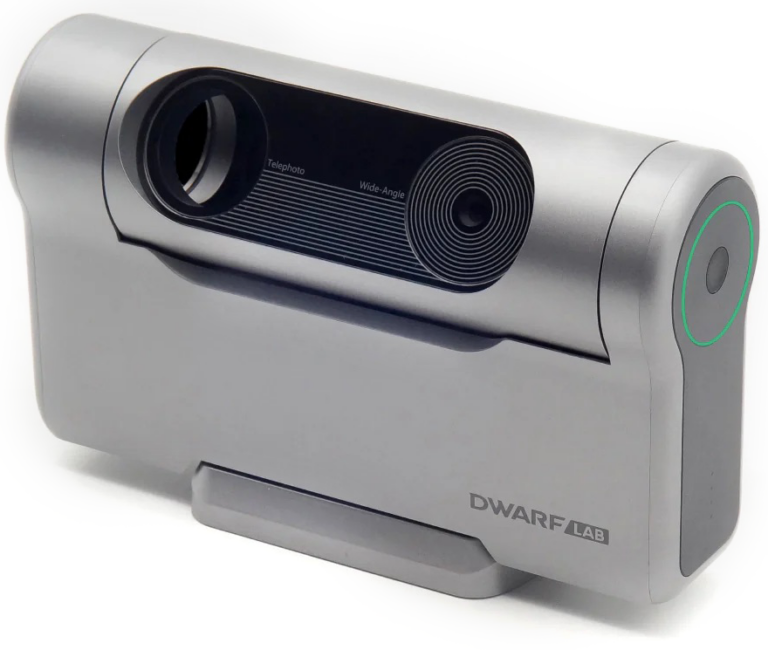I love freebies. A food sample served up at the supermarket, a fishing guide handed out at an outdoor expo, even the toothbrush my dental hygienist gives me after cleaning my teeth — if it’s gratis, I’ll take it!
Needless to say, I’m always on the lookout for astronomy-related freebies. On rare occasions, I’ll hit the jackpot — a telescope rescued from a local recycling facility or an eyepiece donated by a friend who upgraded his set. More realistically, free astronomical goodies come my way in the form of printouts and downloads gleaned from the Internet. Here are a few of my favorites.
The Big Dipper Star Clock. Did you know it’s possible to determine the time of night by noting the position of the Big Dipper relative to Polaris? All you need is a simple device called the Big Dipper Star Clock. While it won’t provide the accuracy of a high-tech timepiece, it’s fun to use and (pay attention, parents, teachers, and Scout leaders) makes a nifty cut-and-paste project for youngsters ages 9 and up. Get instructions and a printable copy at www.pbs.org/seeinginthedark/for-teachers.
Uncle Al’s Star Wheel. A star wheel, or planisphere, is an essential planning tool for the backyard astronomer. If you don’t have a planisphere or you’ve misplaced yours and need one in a pinch, look into Uncle Al’s Star Wheel. Like the Big Dipper Star Clock, Uncle Al’s Star Wheel is available in printout form at the PBS “Seeing in the Dark” website. Parent, teacher, and Scout leader alert: Uncle Al’s Star Wheel is another fun-to-assemble project for junior astronomers and, once completed, an engaging way for them to learn about the night sky.
The Mag-7 Star Atlas. You can’t navigate the night sky without a star atlas, although most cost anywhere from about $10 to well over $100. A cyber-visit to the Cloudy Nights website, however, will get you a free atlas that plots stars down to magnitude 7.25 and includes all objects on the Messier list, the Royal Astronomical Society of Canada’s NGC list, and the Herschel 400 list. Andrew L. Johnson’s Mag-7 Star Atlas (http://tinyurl.com/mag7star) is composed of 20 primary charts and one supplemental chart for the Virgo-Coma Berenices region. It comes in either a field edition (standard black stars on white background) or colored “desk” version.
Freestarcharts.com Finder Charts. A star atlas can only take you to the general neighborhood of a sky object; a finder chart puts you right at the doorstep. Among the Web sources that offer free finder charts is the aptly named freestarcharts.com. What differentiates this site from the others is that it’s a work in progress with frequent updates and additions. Its selection of Messier and NGC charts — each augmented with a photographic image, descriptive notes, and pertinent data — is rapidly growing. Freecharts.com also plots currently observable bright comets and provides monthly updates on the planets.
Astronomy’s “Sky Guide 2014.” Now that 2014 has arrived, you’ll want a concise guide to the year’s astronomical events. Astronomy’s “Sky Guide 2014” keeps you in the astronomical loop with month-by-month sky calendars — each supplemented by a brief narrative that focuses on a key event that month. You’ll even find a preview of coming celestial happenings for 2015. Astronomy’s “Sky Guide 2014” comes free to subscribers if they simply log on to www.Astronomy.com/skyguide.
Questions, comments, or suggestions? Email me at gchaple@hotmail.com. Next month: astro-shopping in the strangest places. Clear skies!











